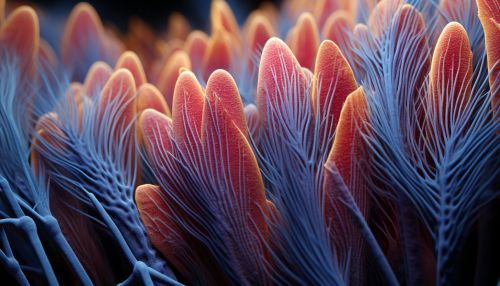Silica Bodies in Plants
Introduction
Silica bodies, also known as phytoliths, are microscopic structures found in many plant species. These structures are composed of silicon dioxide, or silica, and are produced by the plant as a defense mechanism against herbivores. Silica bodies can take on a variety of shapes and sizes, depending on the plant species and the specific tissue in which they are located.


Formation and Structure
Silica bodies are formed through the process of biomineralization, where living organisms produce inorganic substances. In plants, this process involves the uptake of soluble silicon from the soil, which is then transported to various tissues and deposited as solid silica. The process of silica deposition in plants is complex and involves several steps, including the formation of a silica gel and its subsequent hardening into a solid structure.
The structure of silica bodies can vary greatly depending on the plant species. Some silica bodies are simple and spherical, while others are complex and intricately shaped. The shape of the silica body can often provide clues about the plant species in which it was found, making silica bodies useful in the field of paleobotany.
Function and Role in Plant Defense
The primary function of silica bodies in plants is to serve as a physical defense mechanism against herbivores. The presence of these hard, indigestible structures in plant tissues can deter herbivores from feeding on the plant. In addition, silica bodies can cause physical damage to the mouthparts of herbivores, further discouraging feeding.
In addition to their role in plant defense, silica bodies also play a role in the structural support of plant tissues. The presence of silica can strengthen plant tissues, making them more resistant to mechanical stress.
Distribution and Diversity
Silica bodies are found in a wide range of plant species, including both monocots and dicots. However, they are most commonly found in grasses, where they are often present in high concentrations. The distribution of silica bodies within a plant can also vary, with some species depositing silica in specific tissues, while others distribute it more evenly throughout the plant.
The diversity of silica bodies in plants is vast, with different species producing silica bodies of different shapes and sizes. This diversity is thought to be a result of evolutionary pressures, with different plant species evolving different silica body structures in response to their specific environmental conditions and herbivore pressures.
Silica Bodies and Human Activities
Silica bodies in plants have a number of implications for human activities. In agriculture, the presence of silica bodies can affect the palatability and nutritional value of forage crops for livestock. In addition, silica bodies can cause wear and tear on agricultural machinery, leading to increased maintenance costs.
In archaeology and paleobotany, silica bodies can provide valuable information about past plant communities and human-plant interactions. Because silica bodies are resistant to decomposition, they can be preserved in the archaeological record for thousands of years, providing a record of past plant species and their distribution.
